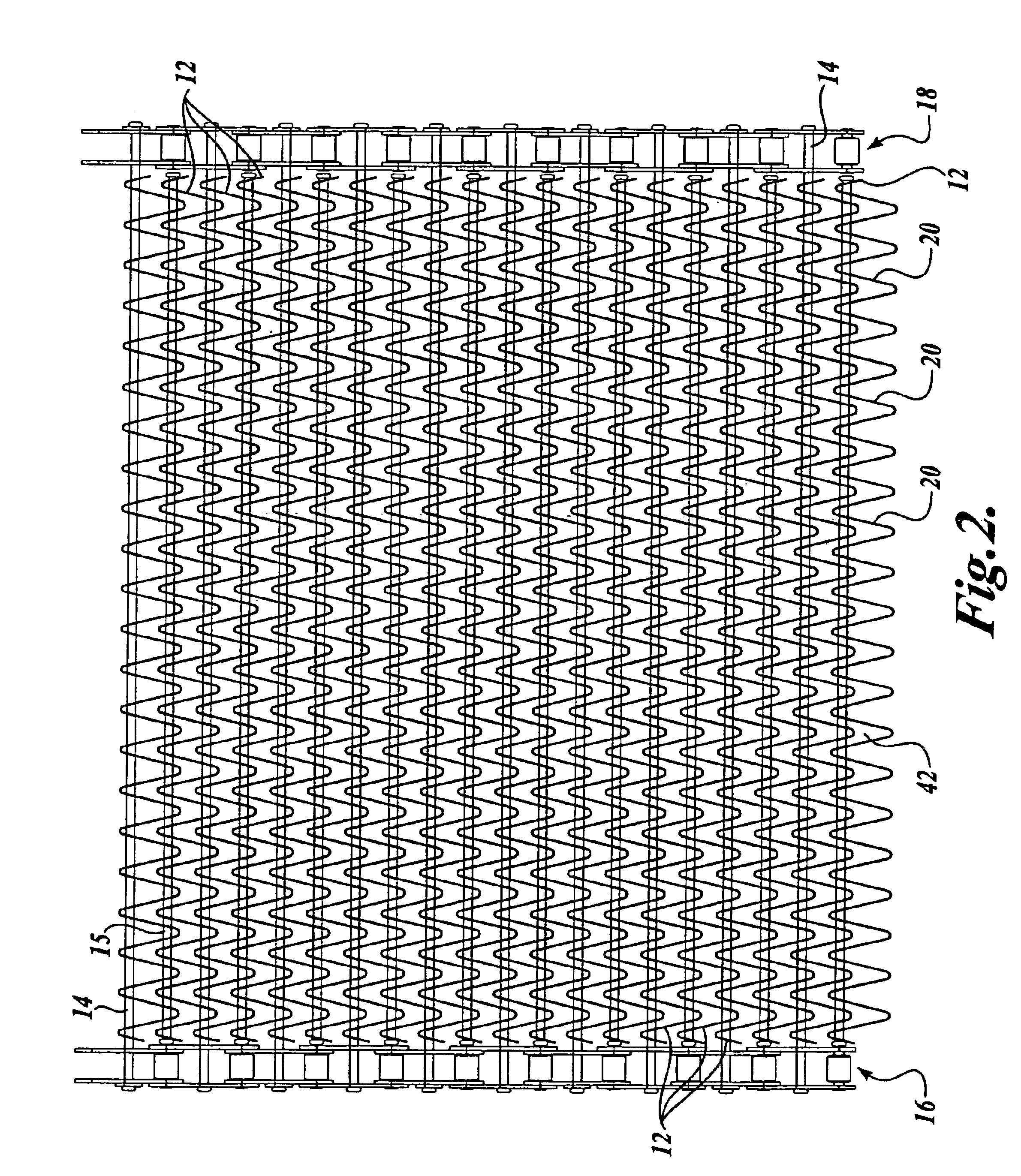Conveyor belt assembly
a conveyor belt and assembly technology, applied in the field of conveyor belts, can solve the problems of increasing potential, impeding the rapid removal of water from conveyor belt assemblies, and not without problems, and achieve the effect of reducing the dispersion of fluid jets
- Summary
- Abstract
- Description
- Claims
- Application Information
AI Technical Summary
Benefits of technology
Problems solved by technology
Method used
Image
Examples
Embodiment Construction
The present invention relates to a new design for a conveyor belt assembly that is particularly suitable for supporting objects to portioned, and more particularly for supporting objects to be portioned during fluid jet cutting operations. It should be noted that for purposes of this description, terminology such as left, right, vertical, horizontal, etc., are descriptive in nature and should not be construed as limiting.
Referring to FIGS. 1 and 2, the conveyor belt assembly 10 is comprised of a conveying surface 42 formed from a plurality of pickets 12. The pickets 12 are pivotally joined to one another and to a left and right drive chain 16 and 18 by a plurality of connecting rods 14 and 15.
Referring specifically to FIG. 2, the connecting rods 14 and 15 are elongate shafts that extend transversely and horizontally just below the conveying surface 42. The connecting rods 14 and 15 are inserted through the pickets 12, pivotally joining adjacent pickets 12 to one another, and pivotal...
PUM
| Property | Measurement | Unit |
|---|---|---|
| interior angles | aaaaa | aaaaa |
| interior angles | aaaaa | aaaaa |
| interior angles | aaaaa | aaaaa |
Abstract
Description
Claims
Application Information
 Login to View More
Login to View More - R&D
- Intellectual Property
- Life Sciences
- Materials
- Tech Scout
- Unparalleled Data Quality
- Higher Quality Content
- 60% Fewer Hallucinations
Browse by: Latest US Patents, China's latest patents, Technical Efficacy Thesaurus, Application Domain, Technology Topic, Popular Technical Reports.
© 2025 PatSnap. All rights reserved.Legal|Privacy policy|Modern Slavery Act Transparency Statement|Sitemap|About US| Contact US: help@patsnap.com



